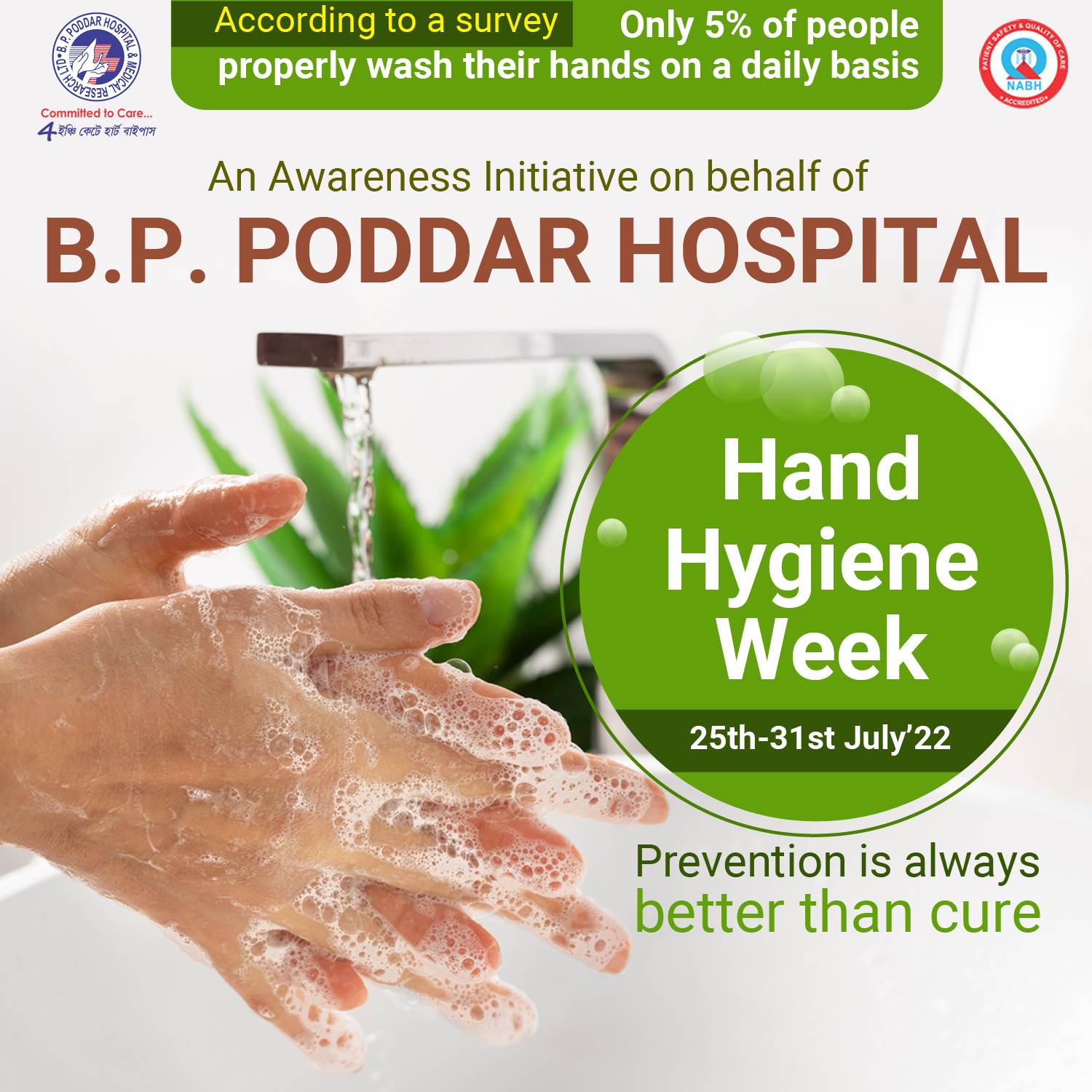- Emergency Admission : +91-8585035846
- Email :feedback@bppoddarhospital.net

As per a survey, only 5% of people properly wash their hands on a daily basis. Therefore we have decided to launch an awareness campaign from 25th June- 31st June to educate and encourage people about the benefits of hand washing.
First let us start by debunking the 7 Myths about Hand Washing.
FACT: Using soap alone is not sufficient to provide full protection during hand wash. First of all the duration for which hand is being washed. Research has shown that, hands should be washed for at least 30 seconds following the proper steps (refer to 7 Steps of Hand Hygiene).
Secondly, the soap itself matters. Some studies have shown that germs and infections may spread from soaps used by multiple people. Although chances and propensity may be low, still you should be aware of it.
FACT: Hand Sanitizer can never replace conventional handwashing with soap and water. The simple reason is that when we are using Hand Sanitizers, only the surface germs are being killed. But the dirt and grime on our hands are removed. This can cause problems if you ingest that when consuming food
FACT: The simple answer is NO. Whenever you are buying Hand Sanitizer, check the alcohol percentage. 60% is the bare minimum and the percentage moves upto 90%. Any hand sanitizer which contains less than 60% alcohol content will not be effective
FACT: Most of us make this simple yet biggest mistake. We may follow all steps and properly wash our hands. But after that, we often dry it using a previously used towel or napkin. Therefore all the germs from the towel or napkin gets transferred back to our hands.
FACT: Lot of research has been conducted on whether using warm or hot water improves killing of germs on the hands. But the data is inconclusive. It can therefore be said that, there is no additional benefits of using hot water. Instead, persistently using hot water to wash can cause dryness to the hands
FACT: Researchers found that paper towels are superior to air dryers and can help remove bacteria, unlike air dryers which can increase bacteria counts. Because air dryers have been shown to spread bacteria between three and six feet from the device, paper towels are also far less likely to contaminate other restroom users.
FACT: It is not always necessary to wash our hands after touching something. Only thing we should try to avoid is unnecessary contacts of our hands to our face, especially, eyes, nose and lips. However, before eating something, we should definitely wash our hands, especially if we are using our hands. Unnecessary frequent hand washing can dry our skin and also remove the helpful commensal bacteria that thrives in our skin.
7 Steps of Hand Hygiene (as per WHO)
Hands should be wet with soap or liquid soap applied for a good lather. The ideal temperature of the water should be between 35 ° to 45 ° C.
Hands should be rubbed palm to palm.
Rub the back of the left hand with the right palm, swap the hands and repeat for few times.
Bring the hands facing each other and join the fingers together into clasped hands. Next, rub the palms and fingers together.
Interlock the fingers and rub the backs of them against the palms.
Enclose the right hand around the left thumb and rub along with the rotation. Swap the hands and repeat it.
Rub the right fingers in a circular motion in the left palm. Repeat the same with the left fingers. ÂÂ
Few Tips for a Healthy Hand Hygiene
Nail Hygiene
Role of Ring Wearing with Hand Hygiene
A number of studies have shown that ring wearing increases the likelihood of bacterial contamination; in particular these studies have demonstrated that the skin under rings can be more heavily colonized than areas of skin without rings and can be a major contributor to hand contamination.